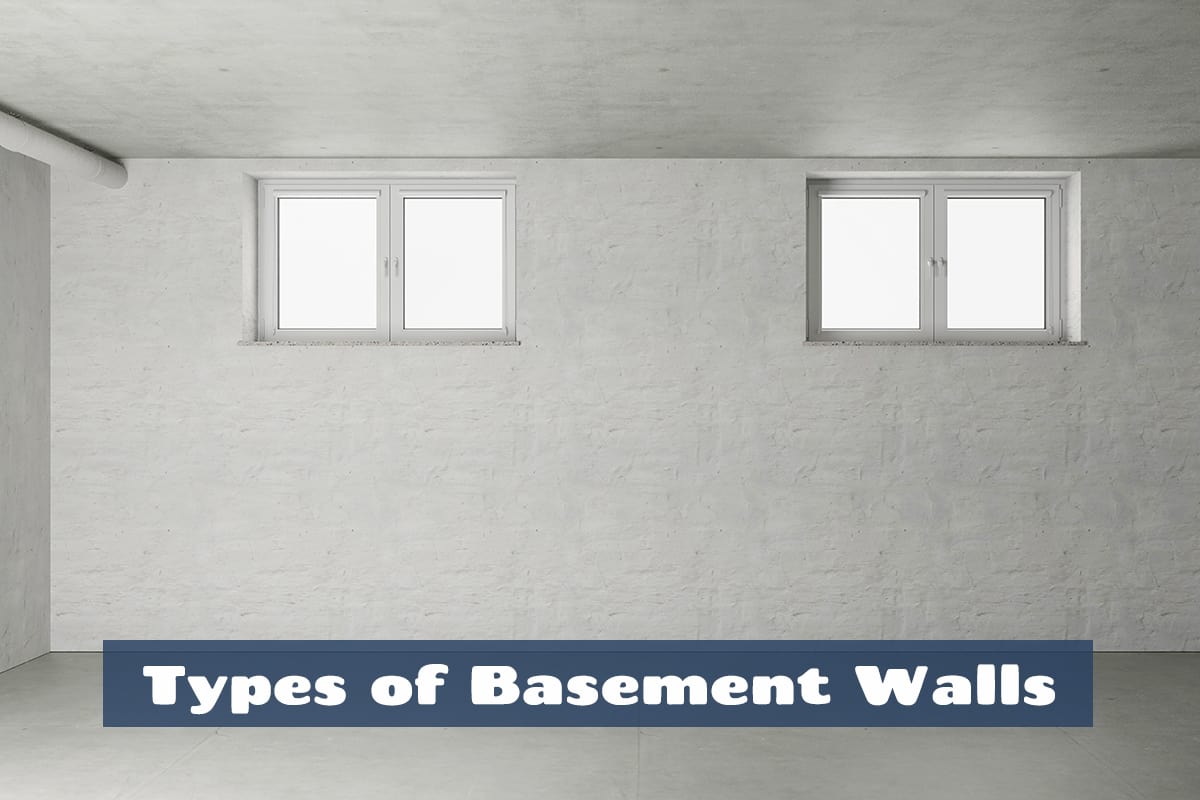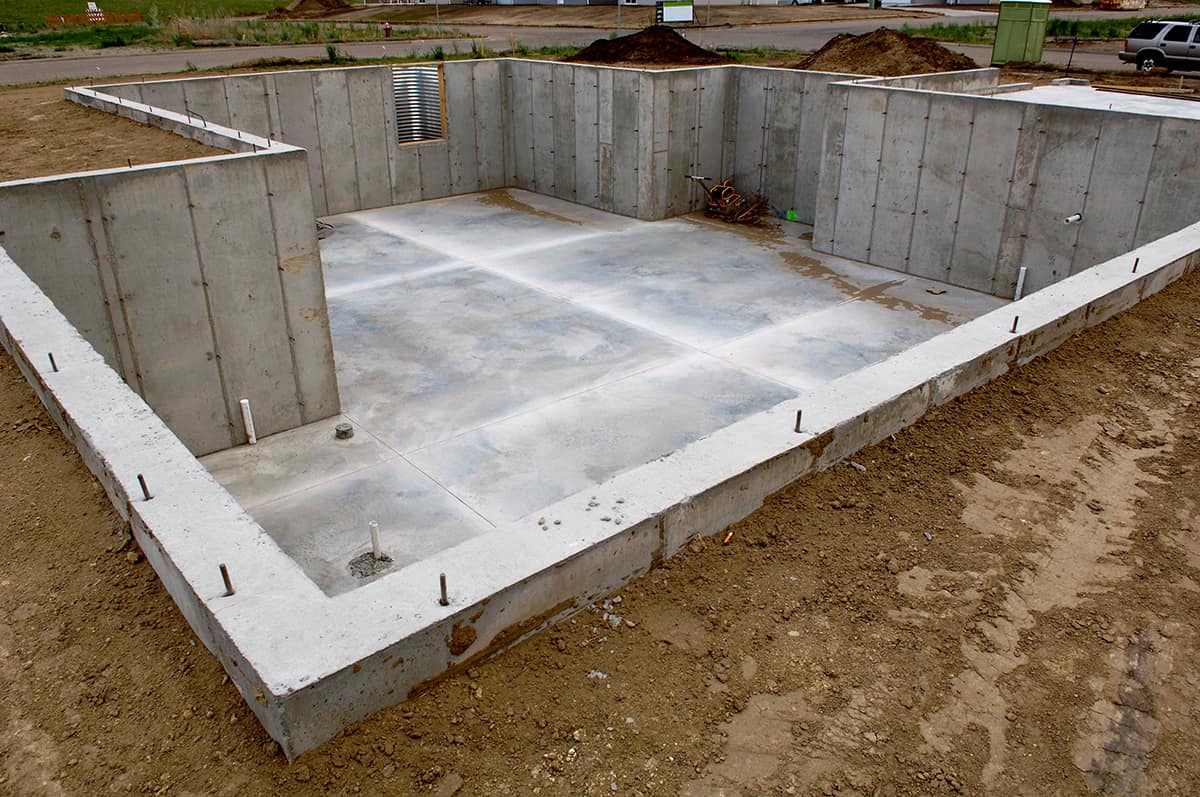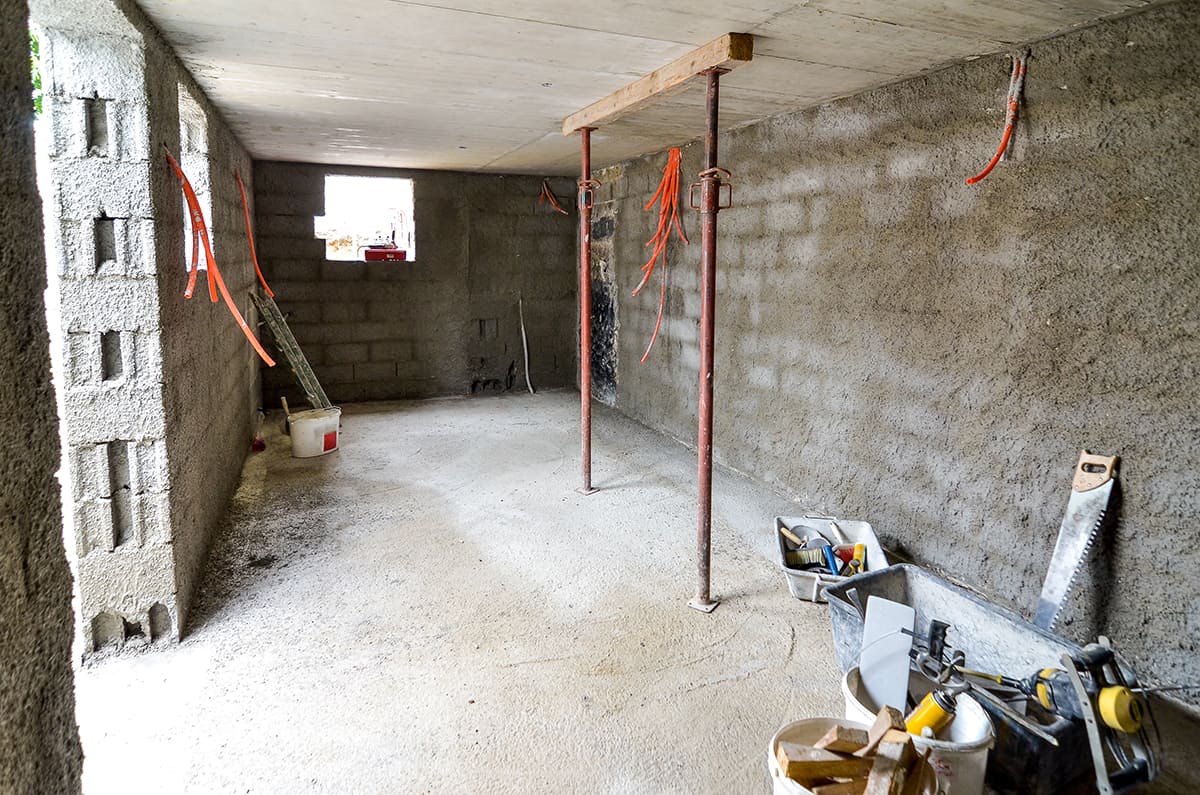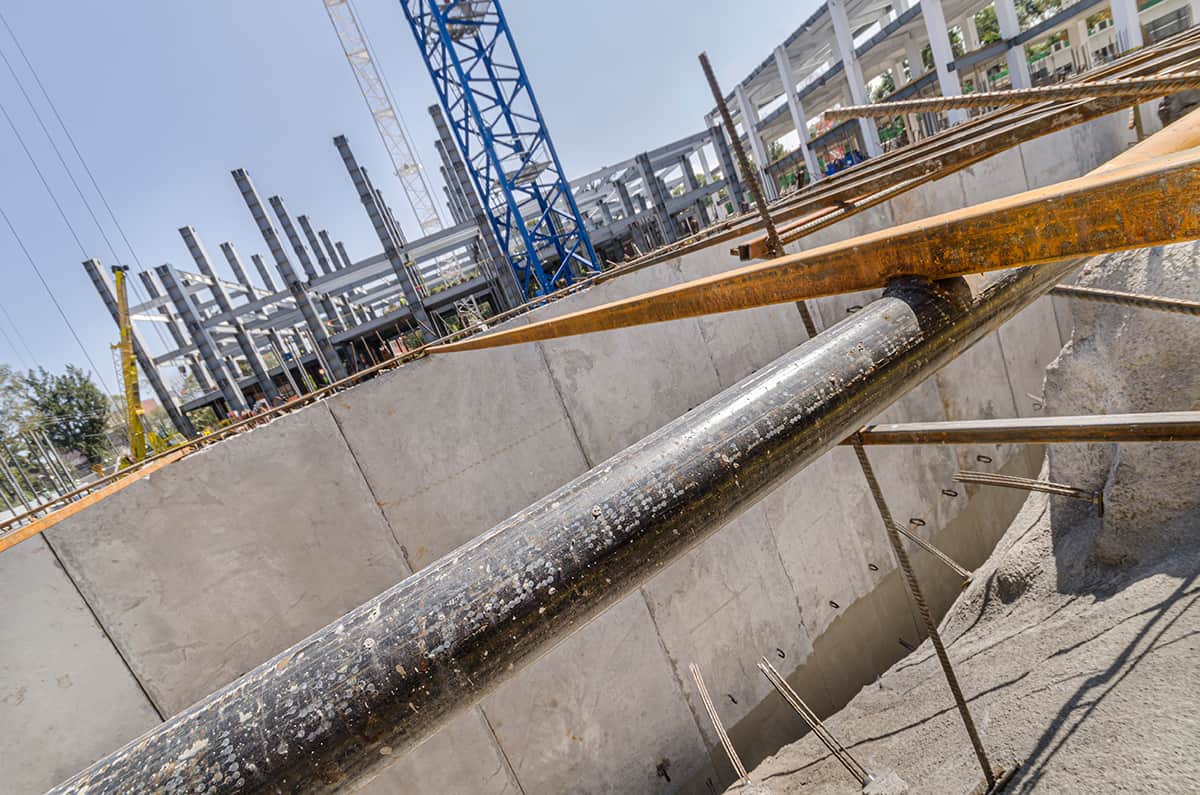When designing or building a basement, you will face the option of which type of wall to use for your construction. Here, we explore the pros and cons of the three main types of basement walls to help you make a more informed decision.
Table of Contents
Basement Wall Types
External basement walls, also known as foundation walls, are an essential part of a building’s structure and serve to support the weight of the structure while providing protection against moisture and other environmental factors.
The type of external basement wall used can vary depending on factors like climate, soil conditions, building codes, and architectural preferences.
Poured Concrete
Poured concrete walls are a common type of foundation and structural walls used in building construction, and they are extremely popular for basement walls. They are created by pouring liquid concrete into forms or molds, allowing it to set and harden, resulting in solid and durable walls that provide structural support for the building.
Pros
Strength: Poured concrete walls are exceptionally strong and durable, providing excellent structural support for the entire building.
They are resistant to many environmental factors, including moisture, pests, and fire, making them an excellent choice for basement walls, which typically come into contact with a lot of moisture. When maintained properly, poured concrete walls have a long lifespan and can withstand the test of time.
Waterproofing: Properly constructed poured concrete walls can be effectively waterproofed to prevent water infiltration and moisture issues. Waterproofing membranes and drainage systems can be added to enhance their resistance to water.
Sound Insulation: Poured concrete walls naturally provide soundproofing benefits, which can help reduce noise transmission between different levels of the building.
Insulation: Insulation can be added to poured concrete walls to improve energy efficiency and comfort in the basement. Insulated forms or rigid foam insulation can be integrated into the construction process.
Cons
Cost: Poured concrete walls can be more expensive to construct compared to some other foundation wall types, such as concrete blocks. The cost includes labor, materials, and formwork.
Labor-Intensive: The construction of poured concrete walls can be labor-intensive, especially during the formwork and concrete pouring stages. This can contribute to higher construction costs.
Limited Aesthetic Options: Poured concrete walls may not have as many aesthetic options as some other wall types, like brick or stone. While they can be finished with coatings or veneers, they may not offer the same aesthetic appeal.
Environmental Impact: The production of concrete is associated with a significant carbon footprint due to the energy-intensive manufacturing process and transportation of materials.
Time-Consuming: The curing process of poured concrete typically takes several days, which can extend the construction timeline compared to faster construction methods.
Moisture Issues: If not properly waterproofed, poured concrete walls can be susceptible to moisture infiltration and water-related problems like mold and mildew growth.
Masonry
Masonry basement walls, also known as concrete block walls, are constructed by stacking and mortaring concrete blocks together. These walls are strong and can provide good insulation when filled with insulation materials. They are commonly used for basement walls in many regions.
Pros
Durability: Concrete block and brick walls are durable and resistant to fire, pests, and rot, which can increase the longevity of the structure.
Cost: One of the main reasons masonry walls are popular in basement construction is their lower cost compared with poured concrete. The expense of constructing a masonry wall is considerably more cost-effective than using poured concrete, and it offers similar benefits.
Insulation Flexibility: Masonry walls can be insulated using various methods, including cavity insulation, exterior insulation, or interior insulation, allowing for flexibility in achieving desired energy efficiency levels.
Sound Insulation: Masonry walls can provide effective sound insulation, reducing noise transmission between different parts of the building.
DIY-Friendly: For smaller projects or homeowners with masonry skills, constructing masonry walls can be a feasible DIY option.
Aesthetic Variety: Masonry walls offer a wide range of aesthetic options. Depending on the type of blocks or bricks used, you can achieve various architectural styles and finishes, enhancing the visual appeal of the basement.
Cons
Moisture Concerns: Concrete block walls can be susceptible to moisture infiltration, especially if not properly sealed or waterproofed. This can lead to issues like efflorescence (white, powdery deposits) and mold growth.
Weaker Than Poured Concrete: Masonry walls, while strong, are generally not as strong as poured concrete walls. In regions with high seismic activity or specific structural requirements, poured concrete may be preferred.
Labor-Intensive: Like poured concrete, the construction of masonry walls can be labor-intensive, especially during the laying of blocks or bricks.
Limited Insulation Value: While masonry walls can be insulated, they may not provide as high insulation value as some other wall types, such as insulated concrete forms (ICFs).
Surface Irregularities: Masonry walls may have surface irregularities and imperfections due to the mortar joints and the natural variations in bricks or blocks. Additional finishes or treatments may be required for a smoother appearance.
Maintenance: Over time, mortar joints may deteriorate and require repointing or maintenance. This is typically less of an issue with poured concrete walls.
Construction Time: Masonry construction may take longer compared to some modern construction methods, which can impact project timelines.
Precast Panels
Precast concrete panels are pre-manufactured concrete sections that can be installed as basement walls. They are produced in a factory and then transported to the construction site for assembly. Precast panels can be an efficient and durable option, but they are the least popular type of exterior basement wall.
Pros
Construction Speed: Precast panel basement walls can be installed quickly because they are manufactured off-site, arriving on-site, ready to be assembled. This can massively help to reduce construction time and labor costs.
Consistent Quality: Precast panels are produced in controlled factory conditions, ensuring consistent quality and strength. This can lead to fewer construction defects and a more reliable foundation.
Durability: Precast panels are made from concrete, which is known to be exceptionally strong and durable. Precast panels offer the same durability as poured concrete walls but with a different installation method.
Design Flexibility: Precast panels can be customized to meet specific design and architectural requirements, including the incorporation of window and door openings.
Sound Insulation: Precast concrete naturally offers soundproofing properties, reducing noise transmission between different areas of the building.
Insulation: Precast panels can be designed with integrated insulation, providing improved energy efficiency and thermal performance for the basement.
Environmentally Friendly: Precast panels generate less on-site waste compared to traditional on-site concrete pouring methods, making them more environmentally friendly.
Cons
Cost: The initial cost of precast panel basement walls is usually higher compared to other popular wall types, such as masonry walls. However, the reduced construction time and labor costs may offset this.
Transportation Challenges: Transporting precast panels to the construction site can be logistically challenging, especially for large panels or sites with limited access.
Installation Complexity: Installing precast panels requires specialized equipment and skilled labor, which may add to the construction cost.
Limited On-Site Adjustments: Once precast panels are manufactured, it can be challenging to make changes or adjustments on-site, which may be necessary for unforeseen issues.
Aesthetic Limitations: While precast panels can be finished with various textures and coatings, they may not offer the same aesthetic variety as some other wall types, like brick or stone.



